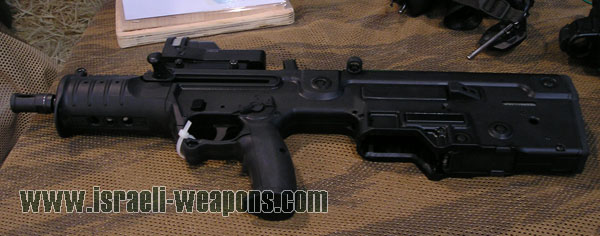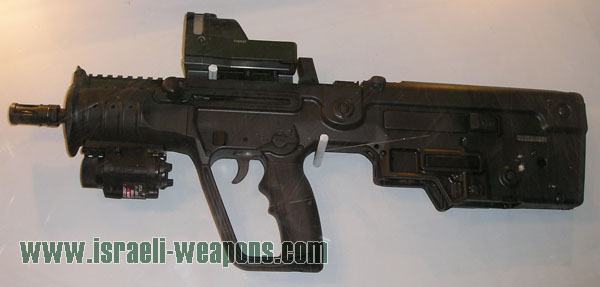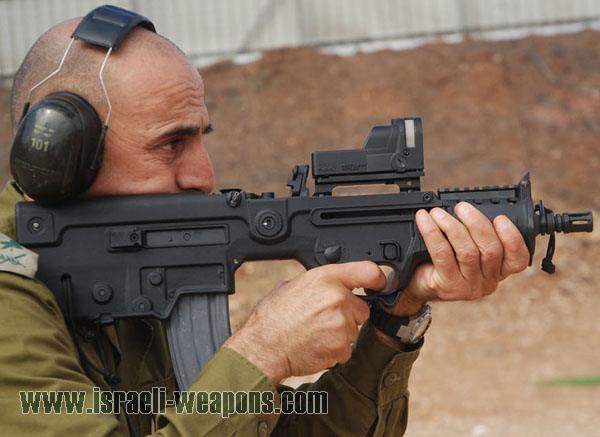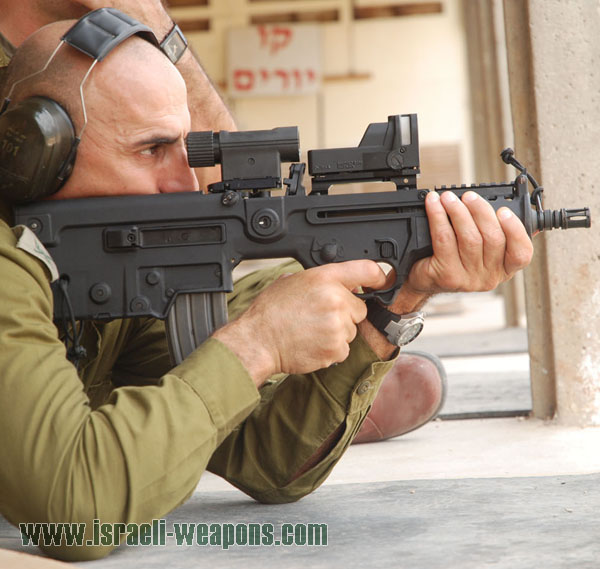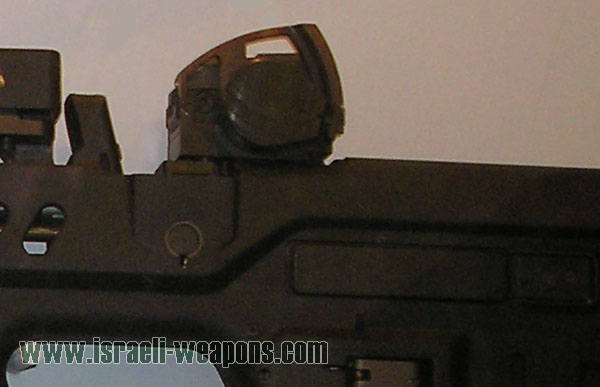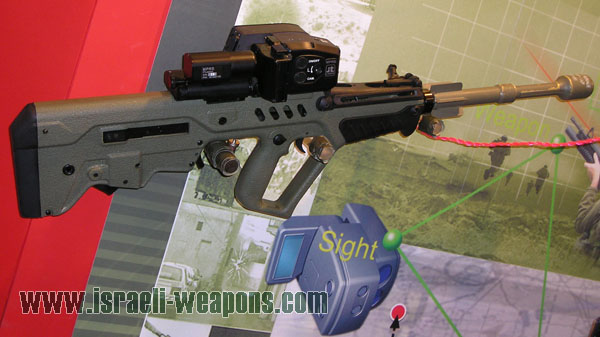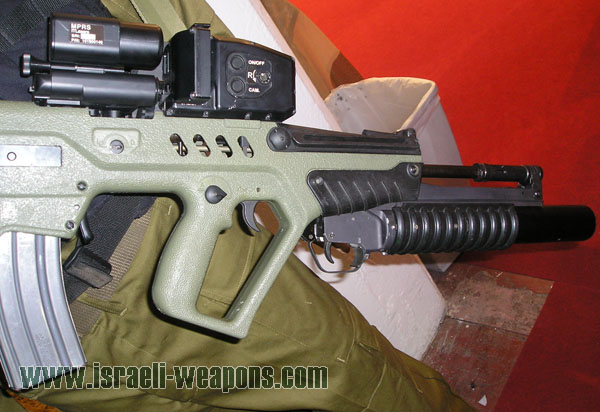Rabu, 21 April 2010
Rabu, 14 April 2010
UZI/ MIni uzi /micro uzi submachine gun (israel)
UZI / Mini UZI / Micro UZI submachine gun (Israel)

Uzi submachine gun with metallic buttstock in opened position

Uzi submachine gun with metallic buttstock in folded position

Uzi submachine gun with fixed (detachable) wooden buttstock

Mini-Uzi submachine gun with shoulder stock folded

Mini-Uzi submachine gun with shoulder stock opened

Micro-Uzi submachine gun with shoulder stock opened

Micro-Uzi submachine gun with shoulder stock folded
heckler und koch Mp5 (jermany)
Your banner or text ads at Modern Firearms website: click here

HK MP-54, or HK 54 - a prototype submachine gun (1965). Earlier MP-5A1 adopted by German police and Border Guard looked the same. Note that the sights and the muzzle are different from the latter models. 
HK MP-5A2 with fixed stock and plastic S-E-F trigger group. 
HK MP-5A3 with retractable buttstock. Earlier model with checkered handguard and a stamped steel S-E-F (in fact, S-1-A) trigger group. 
HK MP-5SD3. A silenced version with integral silencer and retractable stock of A3 version. Early type stamped steel trigger group. 
HK MP-5N. Modern version developed for US Navy. Features plastic trigger group of latest design, with ambidextrous selector lever and "icon" markings. Barrel is threaded to accept US-made detachable silencers, in addition to HK standard three-lug mounts. Retractable buttstock of A3 configuration.
Visual difference between trigger units:
left -earliest type stamped steel with plastic grip (converted from semi-auto only civilian gun HK 94, with American markings on selector);
middle - early type all-plastic with S-E-F markings;
right - most modern all-plastic design of "A4" variation, with additional 3-rounds burst facility and icon markings.
HK MP-5 field-stripped. Note that both types of stocks are shown - fixed A2 type and retractable A3 type.
Read More
Heckler und Koch MP-5 (Germany)

HK MP-54, or HK 54 - a prototype submachine gun (1965). Earlier MP-5A1 adopted by German police and Border Guard looked the same. Note that the sights and the muzzle are different from the latter models.

HK MP-5A2 with fixed stock and plastic S-E-F trigger group.

HK MP-5A3 with retractable buttstock. Earlier model with checkered handguard and a stamped steel S-E-F (in fact, S-1-A) trigger group.

HK MP-5SD3. A silenced version with integral silencer and retractable stock of A3 version. Early type stamped steel trigger group.

HK MP-5N. Modern version developed for US Navy. Features plastic trigger group of latest design, with ambidextrous selector lever and "icon" markings. Barrel is threaded to accept US-made detachable silencers, in addition to HK standard three-lug mounts. Retractable buttstock of A3 configuration.

Visual difference between trigger units:
left -earliest type stamped steel with plastic grip (converted from semi-auto only civilian gun HK 94, with American markings on selector);
middle - early type all-plastic with S-E-F markings;
right - most modern all-plastic design of "A4" variation, with additional 3-rounds burst facility and icon markings.

HK MP-5 field-stripped. Note that both types of stocks are shown - fixed A2 type and retractable A3 type.
mp5a3 jerman weapon
| MP5 | |
|---|---|
 An MP5A3 without magazine | |
| Type | Submachine gun |
| Place of origin | |
| Service history | |
| In service | 1966–present |
| Used by | See Users |
| Production history | |
| Designer | Tilo Möller, Manfred Guhring, Georg Seidl, Helmut Baureuter |
| Designed | 1964–1966 |
| Manufacturer | Heckler & Koch |
| Produced | 1966–present |
| Variants | See Variants |
| Specifications | |
| Weight | 2.54 kg (5.6 lb) (MP5A2, MP5A4) 3.08 kg (6.8 lb) (MP5A3, MP5A5) 2 kg (4.4 lb) (MP5K, MP5KA1, MP5KA4, MP5KA5) 2.78 kg (6.1 lb) (MP5K-PDW) 2.80 kg (6.2 lb) (MP5SD1, MP5SD4) 3.10 kg (6.8 lb) (MP5SD2, MP5SD5) 3.60 kg (7.9 lb) (MP5SD3, MP5SD6) 2.67 kg (5.9 lb) fixed stock / 2.85 kg (6.3 lb) retractable stock (MP5/10) 2.67 kg (5.9 lb) fixed stock / 2.85 kg (6.3 lb) retractable stock (MP5/40) |
| Length | Fixed stock: 680 mm (26.8 in) (MP5A2, MP5A4, MP5/10, MP5/40) 790 mm (31.1 in) (MP5SD2, MP5SD5) Telescoping stock: 700 mm (27.6 in) stock extended / 550 mm (21.7 in) stock collapsed (MP5A3, MP5A5) 603 mm (23.7 in) stock extended / 368 mm (14.5 in) stock folded (MP5K-PDW) 805 mm (31.7 in) stock extended / 670 mm (26.4 in) stock collapsed (MP5SD3, MP5SD6) 660 mm (26.0 in) stock extended / 490 mm (19.3 in) stock collapsed (MP5/10, MP5/40) Receiver end cap: 325 mm (12.8 in) (MP5K, MP5KA1, MP5KA4, MP5KA5) 349 mm (13.7 in) (MP5K-PDW) 550 mm (21.7 in) (MP5SD1, MP5SD4) |
| Barrel length | 225 mm (8.9 in) (MP5A2, MP5A3, MP5A4, MP5A5, MP5/10, MP5/40) 115 mm (4.5 in) (MP5K, MP5KA1, MP5KA4, MP5KA5) 140 mm (5.5 in) (MP5K-PDW) 146 mm (5.7 in) (MP5SD1, MP5SD2, MP5SD3, MP5SD4, MP5SD5, MP5SD6) |
| Width | 50 mm (2.0 in) (MP5A2, MP5A3, MP5A4, MP5A5, MP5K, MP5KA1, MP5KA4, MP5KA5, MP5K-PDW, MP5/10, MP5/40) 60 mm (2.4 in) (MP5SD1, MP5SD2, MP5SD3, MP5SD4, MP5SD5, MP5SD6) |
| Height | 260 mm (10.2 in) (MP5A2, MP5A3, MP5A4, MP5A5, MP5SD1, MP5SD2, MP5SD3, MP5SD4, MP5SD5, MP5SD6, MP5/10, MP5/40) 210 mm (8.3 in) (MP5K, MP5KA1, MP5KA4, MP5KA5, MP5K-PDW) |
| | |
| Cartridge | 9x19mm Parabellum 10mm Auto (MP5/10) .40 S&W (MP5/40) |
| Action | Roller-delayed blowback, closed bolt |
| Rate of fire | 700 rounds/min (MP5SD series), 800 rounds/min (MP5A series, MP5/10 and MP5/40), 900 rounds/min (MP5K series) |
| Muzzle velocity | 400 m/s (1,312 ft/s) (MP5A2, MP5A3, MP5A4, MP5A5) 375 m/s (1,230.3 ft/s) (MP5K, MP5KA1, MP5KA4, MP5KA5, MP5K-PDW) 285 m/s (935.0 ft/s) (MP5SD1, MP5SD2, MP5SD3, MP5SD4, MP5SD5, MP5SD6) 425 m/s (1,394.4 ft/s) (MP5/10) 315 m/s (1,033.5 ft/s) (MP5/40) |
| Effective range | 25 to 100 m sight adjustments |
| Maximum range | 150 m |
| Feed system | 15 or 30-round detachable box magazine, 100-round Beta C-Mag drum magazine |
Rabu, 07 April 2010
m4a1 carbine
"M4A1" redirects here. For the World War II tank, see M4 Sherman. For the World War II rifle, see M4 Survival Rifle.
| Carbine, 5.56 mm, M4 | |
|---|---|
 An M4A1 with SOPMOD package, including Rail Interface System (RIS), flip-up rear sight and Trijicon ACOG 4x. | |
| Type | Assault rifle |
| Place of origin | |
| Service history | |
| In service | 1997–present |
| Used by | See Users |
| Wars | War in Afghanistan (2001–present), War in Iraq (2003-present), Colombian Civil War |
| Production history | |
| Manufacturer | Colt Defense |
| Produced | 1994–present |
| Variants | M4A1, CQBR |
| Specifications | |
| Weight | 5.9 lb (2.7 kg) empty 6.9 lb (3.1 kg) with 30 rounds |
| Length | 33 in (838 mm) (stock extended) 29.8 in (757 mm) (stock retracted) |
| Barrel length | 14.5 in (368 mm) |
| | |
| Cartridge | 5.56x45mm NATO |
| Action | Gas-operated, rotating bolt |
| Rate of fire | 700-950 round/min cyclic[1] |
| Muzzle velocity | 2,970 ft/s (910 m/s) |
| Effective range | 500 m (550 yd) |
| Feed system | 30 round box magazine or other STANAG Magazines. |
Contents[hide] |
[edit] Overview
The M4 and variants fire 5.56x45mm NATO ammunition (they can also fire .223 Remington ammunition) and are gas-operated, air-cooled, magazine-fed, selective fire firearms with a 4-position telescoping stock. Original M4 models had a flat-ended telescoping stock, but newer models are now equipped with a redesigned telescoping stock that is slightly larger with curvature at the end.[3] The M4 is similar to much earlier compact M16 versions, such as the 1960s-era XM177 family. Some of those visual designs are obvious in both weapons, however most of the similarities are not very noticeable.
The M4 with the newer, redesigned telescoping stock
While the M4's maneuverability makes it a candidate for non-infantry troops (vehicle crews, clerks and staff officers), it also makes it ideal for close quarters battle (CQB). The M4 was developed and produced for the United States government by Colt Firearms, which had an exclusive contract to produce the M4 family of weapons through 2009;[citation needed] however, a number of other manufacturers offer M4-like firearms. The M4A1, along with the M16A4, have mostly replaced the M16A2; the U.S. Air Force, for example, plans to transition completely to the M4. The M4 is also the standard rifle for U.S. Air Force Security Forces members whether at home station or deployed abroad. They maintain a yearly qualification on it.
The United States Marine Corps has ordered its officers (up to the rank of lieutenant colonel) and Staff Non-commissioned officers to carry the M4A1 carbine instead of the M9 handgun. This is in keeping with the Marine Corps motto, "Every Marine a rifleman." United States Navy corpsmen will also be issued M4A1s instead of the M9.[4]
[edit] History and variants
HK MP7A1
Heckler - Koch HK MP7A1 submachine gun / personal defense weapon (PDW) (Germany)

HK MP7A1 submachine gun / personal defense weapon in standard configuration, with shoulder stock and foregrip in firing position, and with collimating sight installed on top rail

HK MP7A1 submachine gun / personal defense weapon with extended 40-round magazine and a number of extras, including night sight, flashlight and silencer
Caliber: 4.6x30mm HK
Weight: 1.5 kg empty
Length (stock closed/open): 340 / 540 mm
Barrel length: 180 mm
Rate of fire: 950 rounds per minute
Magazine capacity: 20 or 40 rounds
Minggu, 04 April 2010
usmc m40Ai
USMC M40A1
The M40A1 has to be the pioneer of the modern sniper rifle. The USMC has always had a leg up on the US Army when it comes to sniping (Remember, I am US Army, so it takes a lot to say this!) and the USMC realized that they needed a standard sniper rifle that could perform the job up to standard. After testing and reviews the USMC placed the initial order for 700 Remington 700/M40 sniper rifles in 1966. 550 of those had the redfield 3-9x accurange scope mounted. As time progressed, the weaknesses of the factory M700/40x rifles began to show. The all wood stocks were very prone to shifting in changes in the weather and other weaknesses were noted. So a process began to upgrade the M40 rifles. There is no "official" date (at least that I can tell) when the M40 was replaced by the M40A1, but the process happened in the early 70's. The wood stocks were replaced by McMillan fiberglass stocks, which are known for their ruggedness. The entire system is built by USMC armorers at Quantico, VA. The redfield 3-9x scopes were eventually replaced by a specially designed scope built by Unertl to USMC specifications. This happened in the early 80's and this is was the standard scope being used on the M40A1's and the A3's up until 2006 when the Schmidt & Bender PMII 3-12x scopes were adopted to replace the Unertls. The M40A1 is an outstanding system, very capable of extreme levels of accuracy, though the older M118 ammo tended to hold the rifle back to about 1 MOA, but the new M118LR (designed by the USMC) really unleashed the potential of these rifles with accuracy improving to about .5 MOA. The Max Effective range of the M40A1 is listed at 800 meters by a lot of sources, but the USMC says 1000yards (915 meters) and I would have to go with the USMC on this one, as we routinely shoot past 900 meters with our M24 SWS, and the M40A1 is everybit as accurate.
The USMC has replaced the aging M40A1's with the new M40A3's. A rifle that has been in the developement stages for some time now. The M40A1's have served extremely well for many years (over 30). She'll be missed, but the A3 is a capable successor.
For those of you who would like to purchase a M40A1 for your own collection, several manufacturers make excellent reproductions of the M40A1, some even built to mil-specs. But you cannot purchase an
Read More
Thanks to a former OIC of the USMC sniper school
| Caliber | 7.62x51mm NATO (.308 Win) |
| Length | 43.97" (1117mm) |
| Weight | 14.45 lbs (6.57 kg) |
| Barrel Length | 24 inches (610mm) |
| Lands and Grooves | 6 |
| Twist, Right Hand | 1:12" |
| Trigger Weight | 3 to 5 pounds |
| Magazine Capacity | 5 rounds |
| Sight | Unertl 10x with Mil-Dots and BDC. Specially designed for USMC |
| Stock | McMillan fiberglass A1 with epoxy filler |
| Chamber Pressure | 50000 psi |
| Muzzle Velocity | M118: 2550fps (777mps) M118LR: 2580fps (786mps) |
| Max Effective Range | 1000 yards (915 meters) |
The M40A1 has to be the pioneer of the modern sniper rifle. The USMC has always had a leg up on the US Army when it comes to sniping (Remember, I am US Army, so it takes a lot to say this!) and the USMC realized that they needed a standard sniper rifle that could perform the job up to standard. After testing and reviews the USMC placed the initial order for 700 Remington 700/M40 sniper rifles in 1966. 550 of those had the redfield 3-9x accurange scope mounted. As time progressed, the weaknesses of the factory M700/40x rifles began to show. The all wood stocks were very prone to shifting in changes in the weather and other weaknesses were noted. So a process began to upgrade the M40 rifles. There is no "official" date (at least that I can tell) when the M40 was replaced by the M40A1, but the process happened in the early 70's. The wood stocks were replaced by McMillan fiberglass stocks, which are known for their ruggedness. The entire system is built by USMC armorers at Quantico, VA. The redfield 3-9x scopes were eventually replaced by a specially designed scope built by Unertl to USMC specifications. This happened in the early 80's and this is was the standard scope being used on the M40A1's and the A3's up until 2006 when the Schmidt & Bender PMII 3-12x scopes were adopted to replace the Unertls. The M40A1 is an outstanding system, very capable of extreme levels of accuracy, though the older M118 ammo tended to hold the rifle back to about 1 MOA, but the new M118LR (designed by the USMC) really unleashed the potential of these rifles with accuracy improving to about .5 MOA. The Max Effective range of the M40A1 is listed at 800 meters by a lot of sources, but the USMC says 1000yards (915 meters) and I would have to go with the USMC on this one, as we routinely shoot past 900 meters with our M24 SWS, and the M40A1 is everybit as accurate.
The USMC has replaced the aging M40A1's with the new M40A3's. A rifle that has been in the developement stages for some time now. The M40A1's have served extremely well for many years (over 30). She'll be missed, but the A3 is a capable successor.
For those of you who would like to purchase a M40A1 for your own collection, several manufacturers make excellent reproductions of the M40A1, some even built to mil-specs. But you cannot purchase an
sniper rifles
Accuracy International Super Magnum (L115A1)

Image courtesy of Accuracy International
The PM Super Magnum, or Super Magnum (SM) as it is now known, is essentially an Artic Warfare rifle upgraded to accept the high power cartridges, especially the .338 Lapua. The barrel is slightly longer to take full potential of the .338, and the range is increased signifcantly. This rifle is approaching the range of the .50 cals, but yet its only slightly heavier then the standard 7.62mm version of the rifle. Accuracy of all the AI rifles gets down around .5 MOA. Several military forces around the world are adopting the Super Magnum as a special purpose sniper rifle. The U.K. was one of the first and has designated the rifle L115A1 and uses it as a "platoon level support weapon".
Read More

Image courtesy of Accuracy International
| Caliber | .338 Lapua (8.60x70mm) .300 Win Mag 7mm Rem Mag |
| Operation | Bolt Action |
| Length | 50 inches |
| Weight | 14.99 lbs (6.8kg) empty without telescope |
| Barrel | 27" (.338 Lapua) 26" (.300 and 7mm) |
| Twist, Right Hand | 1 turn in 8" (.338 Lapua) 1 turn in 10" (.300 and 7mm) |
| Magazine Capacity | 5 round box magazine |
| Maximum Effective Range | 1100+ meters |
| Additional Features: | 1 piece scope mount Parker-Hale bipod Black, custom-fitted case Tool kit Cleaning kit |
The PM Super Magnum, or Super Magnum (SM) as it is now known, is essentially an Artic Warfare rifle upgraded to accept the high power cartridges, especially the .338 Lapua. The barrel is slightly longer to take full potential of the .338, and the range is increased signifcantly. This rifle is approaching the range of the .50 cals, but yet its only slightly heavier then the standard 7.62mm version of the rifle. Accuracy of all the AI rifles gets down around .5 MOA. Several military forces around the world are adopting the Super Magnum as a special purpose sniper rifle. The U.K. was one of the first and has designated the rifle L115A1 and uses it as a "platoon level support weapon".
Senin, 01 Maret 2010
M16A1 rifle

M16A1 rifle with 30 rounds magazine and a 40mm M203 grenade launcher attached (circa mid-1970s)
IMI Tavor TAR-21

Tavor TAR-21 partially disassembled
Image: Dean Roxby (Canada)
| TAR 21 | TAR C21 / CTAR 21 | TAR M21 / MTAR 21 | |
| Caliber: | 5,56x45 NATO | ||
| Action | Gas operated, rotating bolt | ||
| Overall length | 720 mm | 640 mm | 590 mm |
| Barrel length | 460 mm | 380 mm | 330 mm |
| Weight | 3,27 kg empty | 3,18 kg empty | 2,95 kg empty |
| Magazine capacity | 30 rounds | ||
| Rate of fire | 750 - 900 rounds per minute | 750 - 900 rounds per minute | 750 - 900 rounds per minute |
Langganan:
Postingan (Atom)
